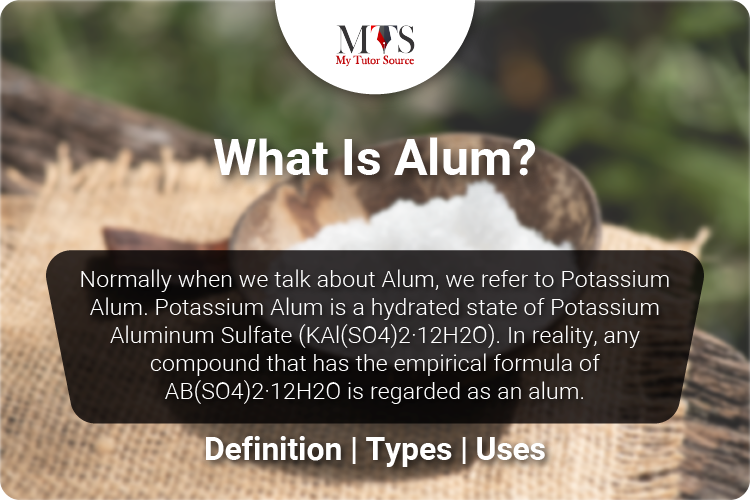 Alum, or Fitkari, emerges as an invaluable ally for the Indian household, offering a multitude of benefits that span personal hygiene, beauty, health, and home maintenance. This natural and affordable substance, rooted in ancient practices, proves its worth in modern applications—from purifying water and preserving food to treating acne and enhancing oral health. Understanding the simple science behind alum’s antiseptic, astringent, and coagulating properties underscores its versatility and effectiveness. By incorporating alum into daily routines, householders can harness its practical advantages, making life healthier, cleaner, and more efficient. Embrace alum as a natural, convenient, and economical solution for various household needs.
Alum, or Fitkari, emerges as an invaluable ally for the Indian household, offering a multitude of benefits that span personal hygiene, beauty, health, and home maintenance. This natural and affordable substance, rooted in ancient practices, proves its worth in modern applications—from purifying water and preserving food to treating acne and enhancing oral health. Understanding the simple science behind alum’s antiseptic, astringent, and coagulating properties underscores its versatility and effectiveness. By incorporating alum into daily routines, householders can harness its practical advantages, making life healthier, cleaner, and more efficient. Embrace alum as a natural, convenient, and economical solution for various household needs.
Alum, commonly known as fitkari in India, is a naturally occurring sulfate mineral renowned for its myriad applications spanning centuries. This humble yet powerful compound has been an integral part of Indian households and traditional medicine, revered for its antiseptic, astringent, and coagulating properties. Historically, alum was used in ancient India for purifying water, preserving food, and treating various skin and health issues, showcasing its versatility and indispensability in everyday life. Today, in the hustle and bustle of modern Indian middle-class households, the benefits of alum remain as relevant as ever. This article aims to explore the extensive and practical uses of alum, providing a comprehensive guide for homemakers to harness its full potential. From personal hygiene and beauty treatments to health remedies, food preservation, and household cleaning, alum offers natural, convenient, and affordable solutions. By understanding the science behind its effectiveness and discovering easy-to-implement home hacks, householders can integrate alum into their daily routines, enhancing their quality of life. Dive in to uncover how this ancient substance continues to serve as a versatile and practical tool in contemporary homes, proving that some traditional wisdom never goes out of style.
Historical Uses of ‘ Spathika Bhasma’ in India
Traditional Medicine
 In ancient Indian medicine, alum was a trusted remedy for various ailments. It was often used to treat wounds and cuts due to its powerful antiseptic properties, which prevent infections and promote faster healing. The astringent nature of alum helped to contract tissues and reduce bleeding, making it an effective first-aid solution. Additionally, alum was utilized to treat skin conditions like acne and pimples, thanks to its antibacterial qualities that inhibit the growth of acne-causing bacteria. The scientific basis for these uses lies in alum’s ability to precipitate proteins and form a protective barrier, thereby aiding in tissue repair and infection control.
In ancient Indian medicine, alum was a trusted remedy for various ailments. It was often used to treat wounds and cuts due to its powerful antiseptic properties, which prevent infections and promote faster healing. The astringent nature of alum helped to contract tissues and reduce bleeding, making it an effective first-aid solution. Additionally, alum was utilized to treat skin conditions like acne and pimples, thanks to its antibacterial qualities that inhibit the growth of acne-causing bacteria. The scientific basis for these uses lies in alum’s ability to precipitate proteins and form a protective barrier, thereby aiding in tissue repair and infection control.
Ritual Purification
Alum played a significant role in ritual purification practices in ancient India. It was used to purify water for drinking and ceremonial purposes, leveraging its coagulating properties to remove impurities and make the water safe for consumption. The scientific explanation for this practice involves alum’s ability to cause suspended particles in water to clump together and settle at the bottom, a process known as flocculation. This method effectively clears the water of contaminants and pathogens, ensuring it is pure and hygienic for use in various religious and domestic rituals. The use of alum in purification underscores its importance in maintaining health and spiritual cleanliness in traditional Indian society.
Household Cleaning
In traditional Indian households, alum was a staple for various cleaning purposes. Its potent antibacterial and astringent properties made it an excellent agent for disinfecting surfaces and eliminating odors. For instance, alum was often dissolved in water and used to clean kitchen utensils and surfaces to ensure they were free from harmful bacteria. Additionally, alum was employed in laundering to enhance the brightness of white fabrics and remove stubborn stains. The scientific reasoning behind this is that alum’s acidic nature helps break down and dissolve organic stains, while its antibacterial properties ensure thorough disinfection. This multifaceted use of alum in household cleaning highlights its versatility and effectiveness in maintaining a clean and healthy living environment.
Present-Day Applications of Alum
Personal Hygiene
Natural Deodorant
 Alum is increasingly popular as a natural deodorant due to its effective and non-toxic properties. Unlike commercial deodorants, which often contain harmful chemicals like parabens, aluminum chlorohydrate, and artificial fragrances, alum offers a safer alternative for controlling body odor. Alum works as a deodorant primarily through its antibacterial properties. When applied to the skin, it creates an environment that inhibits the growth of odor-causing bacteria. Sweat itself is odorless; it is the bacteria on the skin that break down sweat into malodorous compounds. By preventing bacterial growth, alum effectively reduces body odor.
Alum is increasingly popular as a natural deodorant due to its effective and non-toxic properties. Unlike commercial deodorants, which often contain harmful chemicals like parabens, aluminum chlorohydrate, and artificial fragrances, alum offers a safer alternative for controlling body odor. Alum works as a deodorant primarily through its antibacterial properties. When applied to the skin, it creates an environment that inhibits the growth of odor-causing bacteria. Sweat itself is odorless; it is the bacteria on the skin that break down sweat into malodorous compounds. By preventing bacterial growth, alum effectively reduces body odor.
Moreover, alum acts as an astringent, temporarily tightening the skin and reducing sweat secretion. This dual action ensures that the user stays fresh for an extended period without the need for reapplication. One of the significant benefits of using alum over commercial deodorants is its hypoallergenic nature. Many people with sensitive skin or allergies find commercial deodorants irritating or causing rashes. Alum, on the other hand, is gentle on the skin and less likely to cause adverse reactions. It is also free from synthetic fragrances, making it suitable for those who prefer a fragrance-free option.
Another advantage of alum is its sustainability. It is a naturally occurring mineral and can be used in its raw form, reducing the need for plastic packaging and other environmentally harmful materials typically associated with commercial deodorants. Furthermore, alum is cost-effective. A single alum crystal or stick can last several months, providing a budget-friendly solution for personal hygiene.
The application of alum as a deodorant is simple and convenient. Typically, it is used in the form of a solid crystal or a solution. The crystal can be moistened with water and then applied directly to the skin, or a small amount of powdered alum can be dissolved in water and sprayed or dabbed on the underarms. This versatility in application methods makes it accessible and easy to incorporate into daily routines.
In summary, alum stands out as a natural, effective, and economical deodorant option. Its ability to inhibit bacterial growth and reduce sweat secretion ensures long-lasting freshness without the risks associated with chemical-laden commercial products. For those seeking a healthier and more environmentally friendly approach to personal hygiene, alum offers an excellent alternative.
Shaving Cuts and Aftershave
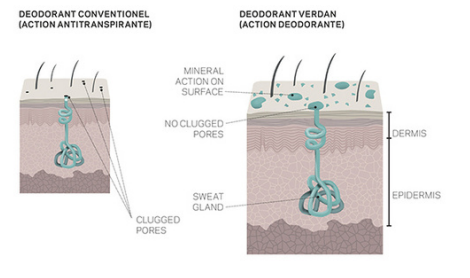 Alum has long been recognized for its antiseptic properties, making it an ideal aftershave solution for treating shaving cuts and nicks. Shaving can often lead to minor abrasions and cuts, which, if not properly treated, can become infected or cause discomfort. Applying alum post-shave helps to prevent these issues by leveraging its natural antiseptic and astringent qualities.
Alum has long been recognized for its antiseptic properties, making it an ideal aftershave solution for treating shaving cuts and nicks. Shaving can often lead to minor abrasions and cuts, which, if not properly treated, can become infected or cause discomfort. Applying alum post-shave helps to prevent these issues by leveraging its natural antiseptic and astringent qualities.
When used as an aftershave, alum works by constricting blood vessels and tissues. This astringent action helps to stop minor bleeding from small cuts and nicks quickly. The aluminum ions in alum create a protective barrier on the skin, which not only prevents bacteria from entering the wounds but also aids in faster healing. This is particularly beneficial for those with sensitive skin or prone to razor bumps, as alum can help soothe irritation and reduce inflammation.
Additionally, alum has a cooling and calming effect on the skin. After shaving, the skin is often irritated and sensitive. Applying alum can provide immediate relief, reducing redness and discomfort. The mineral helps to close pores, which can minimize the risk of bacterial infections and ingrown hairs. This makes it an excellent choice for maintaining smooth and healthy skin post-shave.
Another significant benefit of using alum as an aftershave is its natural composition. Unlike many commercial aftershaves that contain alcohol and synthetic ingredients, which can further irritate the skin, alum is a natural product with minimal side effects. It is hypoallergenic and free from artificial fragrances and dyes, making it suitable for all skin types, including those with allergies or sensitivities.
The application process is straightforward. Alum can be used in the form of a block or powder. For a block, it is moistened with cold water and gently rubbed over the shaved area. This helps to disinfect and soothe the skin. If using powdered alum, a small amount can be dissolved in water and applied with a cotton pad. Both methods are effective in delivering the benefits of alum.
Soap-Free Shower Routine
A soap-free shower routine incorporating alum offers a natural and effective alternative to traditional soap-based cleansing. Alum, known for its antibacterial and astringent properties, provides gentle exfoliation and purification for the skin. To begin a soap-free shower routine with alum, dissolve alum powder in warm water by swirling it for a few seconds until fully dissolved. Alternatively, you can prepare a diluted alum solution beforehand.
Once the alum is dissolved, soak a washcloth in the alum-infused water and gently scrub your body. The mild abrasive action of the washcloth, coupled with alum’s exfoliating properties, helps remove dead skin cells, dirt, and impurities from the skin’s surface. This process not only cleanses the skin but also promotes circulation and smoothness.
For a deeper cleanse and exfoliation, pour the diluted alum solution directly over your body and allow it to sit for a few minutes. During this time, the alum water works to purify and tighten the skin. After soaking, use a pumice stone or a soft brush to gently exfoliate areas prone to roughness or calluses, such as elbows or heels. This step helps to further refine the skin’s texture and promote renewal.
Finally, rinse off thoroughly with plain water to remove any residual alum and impurities from the skin’s surface. Pat your skin dry with a towel and follow up with a moisturizer to maintain skin hydration and suppleness. The alum-infused shower routine leaves your skin feeling refreshed, cleansed, and rejuvenated without the use of harsh chemicals or synthetic additives.
This soap-free shower method with alum is particularly beneficial for individuals with sensitive skin, allergies to certain soap ingredients, or those seeking a more natural skincare regimen. Alum’s ability to cleanse, purify, and gently exfoliate makes it a versatile option for daily hygiene routines, promoting skin health and radiance.
By incorporating alum into your shower routine, you can enjoy the benefits of a gentle and effective cleansing experience while supporting skin wellness naturally. Experiment with the concentration of alum in water to suit your skin’s sensitivity and preferences, ensuring a personalized and satisfying shower ritual that enhances your overall skincare regimen.
Beauty and Skin Care
Acne and Pimple Treatment
 Alum is a potent natural remedy for treating acne and pimples due to its remarkable antibacterial properties. Acne is primarily caused by the proliferation of bacteria in clogged pores, leading to inflammation and infection. Alum, with its strong antiseptic and antibacterial qualities, effectively combats these bacteria, reducing the occurrence and severity of acne. When applied to the skin, alum helps to disinfect the affected area, kill the bacteria, and promote a clearer complexion. Moreover, alum’s astringent nature helps to tighten pores, preventing future breakouts by minimizing the entry of dirt and oil.
Alum is a potent natural remedy for treating acne and pimples due to its remarkable antibacterial properties. Acne is primarily caused by the proliferation of bacteria in clogged pores, leading to inflammation and infection. Alum, with its strong antiseptic and antibacterial qualities, effectively combats these bacteria, reducing the occurrence and severity of acne. When applied to the skin, alum helps to disinfect the affected area, kill the bacteria, and promote a clearer complexion. Moreover, alum’s astringent nature helps to tighten pores, preventing future breakouts by minimizing the entry of dirt and oil.
A simple DIY alum face pack can work wonders for acne-prone skin. One effective recipe involves mixing a small amount of alum powder with rose water to form a smooth paste. Apply this paste evenly on the face, focusing on areas with acne or pimples. Leave it on for 15-20 minutes, then rinse off with lukewarm water. This face pack not only helps to reduce acne but also soothes the skin, thanks to the calming properties of rose water. Another effective recipe includes mixing alum powder with multani mitti (Fuller’s earth) and a few drops of lemon juice. This combination harnesses the oil-absorbing properties of multani mitti and the antibacterial action of lemon juice, providing a comprehensive treatment for oily and acne-prone skin.
Regular use of these alum-based face packs can lead to noticeable improvements in skin texture and clarity. Alum helps to dry out active pimples and reduce redness, while also preventing new acne from forming. For those with sensitive skin, it’s advisable to do a patch test before applying the face pack to ensure there are no adverse reactions.
Skin Tightening
Alum’s astringent properties make it a popular choice for skin tightening and toning. An astringent substance works by contracting the skin tissues, thereby reducing the appearance of pores and giving the skin a firmer, more youthful look. This makes alum particularly beneficial for those looking to combat signs of aging or sagging skin.
Using alum in face masks is a simple and effective way to reap its skin-tightening benefits. A common method involves creating a face mask by dissolving alum powder in water to form a smooth paste. This paste can be applied evenly over the face and neck, then left to dry for about 15-20 minutes before rinsing off with cool water. As the mask dries, it tightens the skin, providing an immediate lifting effect and a smoother complexion.
For enhanced benefits, alum can be combined with other natural ingredients. For instance, mixing alum powder with egg white creates a powerful face mask. Egg white is known for its skin-tightening properties, and when combined with alum, it enhances the firming effect. Apply the mixture to the face and neck, leave it on until it fully dries, and then rinse off with cool water. This mask not only tightens the skin but also nourishes it, leaving it feeling soft and rejuvenated.
Regular use of alum-based face masks can help maintain skin elasticity and reduce the appearance of fine lines and wrinkles. Alum’s ability to contract skin tissues makes it an excellent natural alternative to commercial skin tightening products, which often contain harsh chemicals.
Hair Removal
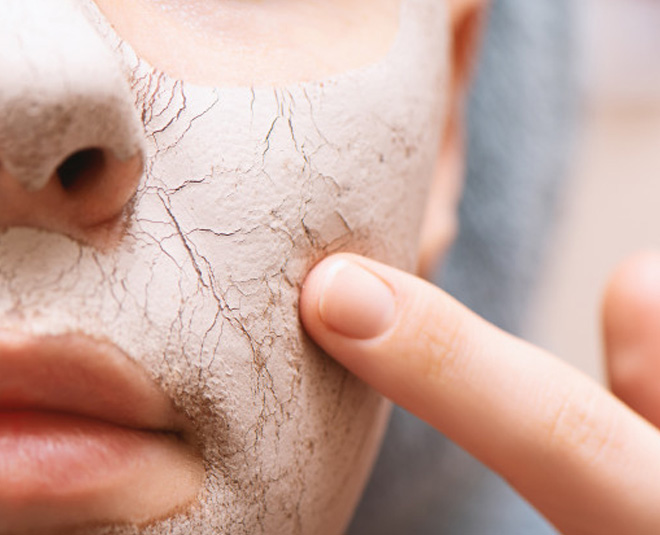 Alum has been traditionally used in hair removal practices in various cultures, including India. Its natural astringent properties help to inhibit hair growth and soothe the skin, making it a valuable component in DIY hair removal treatments. Historically, alum was often combined with other natural ingredients to create a paste that not only helped remove hair but also delayed its regrowth.
Alum has been traditionally used in hair removal practices in various cultures, including India. Its natural astringent properties help to inhibit hair growth and soothe the skin, making it a valuable component in DIY hair removal treatments. Historically, alum was often combined with other natural ingredients to create a paste that not only helped remove hair but also delayed its regrowth.
One easy home remedy for hair removal involves mixing alum powder with rose water. The mixture should be applied to the desired area using a cotton ball. After it dries, it can be rinsed off, and the process can be repeated a few times a week. The astringent properties of alum help to weaken the hair roots, making the hair easier to remove and slowing down its regrowth over time.
Another popular method includes combining alum powder with turmeric powder and a few drops of olive oil or coconut oil. Turmeric has anti-inflammatory and antibacterial properties, which complement the action of alum. This mixture can be applied to the skin, left to dry, and then gently scrubbed off. The combination not only helps in removing unwanted hair but also leaves the skin smooth and glowing.
For those who prefer waxing, alum can be used as an aftercare treatment to soothe the skin and reduce irritation. After waxing, applying a solution of alum powder dissolved in water helps to disinfect the area, reduce redness, and prevent ingrown hairs. This aftercare routine ensures that the skin remains calm and less prone to post-waxing bumps or infections.
Medicinal and Health Benefits
Oral Health
 Alum plays a significant role in maintaining oral health, particularly in addressing issues like bad breath and gum problems. Its antibacterial properties make it an effective agent for eliminating the bacteria that cause bad breath. Regularly gargling with an alum solution can help neutralize these bacteria, providing a fresher breath. Moreover, alum’s astringent properties make it beneficial for tightening and strengthening the gums. This can be particularly useful for individuals suffering from gingivitis or other gum diseases, as it helps reduce inflammation and bleeding by promoting tissue contraction and healing.
Alum plays a significant role in maintaining oral health, particularly in addressing issues like bad breath and gum problems. Its antibacterial properties make it an effective agent for eliminating the bacteria that cause bad breath. Regularly gargling with an alum solution can help neutralize these bacteria, providing a fresher breath. Moreover, alum’s astringent properties make it beneficial for tightening and strengthening the gums. This can be particularly useful for individuals suffering from gingivitis or other gum diseases, as it helps reduce inflammation and bleeding by promoting tissue contraction and healing.
Preparing a simple mouthwash using alum is both easy and cost-effective. To make an alum mouthwash, dissolve a teaspoon of alum powder in a cup of warm water. Stir well until the alum is completely dissolved. This solution can be used to gargle for about 30 seconds, twice a day. For those with sensitive gums, it’s advisable to start with a more diluted solution and gradually increase the concentration as the gums become accustomed to it. This homemade mouthwash helps to maintain oral hygiene by reducing bacterial load, preventing plaque buildup, and keeping the gums healthy.
Alum can also be used as a remedy for canker sores or mouth ulcers. The same antibacterial and astringent properties that make it effective for gum care can help soothe the irritation and speed up the healing process of these painful sores. To use alum for canker sores, a small amount of alum powder can be applied directly to the affected area, left for a minute, and then rinsed off thoroughly with water. Although the taste might be slightly bitter, the benefits in terms of pain relief and faster healing are well worth it.
In summary, alum serves as a versatile and potent oral health aid. Its ability to eliminate bacteria, tighten gums, and promote healing makes it a valuable addition to dental care routines. By incorporating simple practices like alum mouthwash and direct application for sores, individuals can achieve significant improvements in their oral hygiene and overall mouth health.
Wound Healing
 Alum is renowned for its antiseptic and antibacterial properties, making it an excellent choice for treating minor cuts and wounds in household first aid. When applied to a wound, alum helps to disinfect the area, killing bacteria and preventing infections. Its astringent properties contribute to the contraction of tissues, which helps in stopping bleeding and promoting faster healing. This dual action makes alum a highly effective natural remedy for minor injuries.
Alum is renowned for its antiseptic and antibacterial properties, making it an excellent choice for treating minor cuts and wounds in household first aid. When applied to a wound, alum helps to disinfect the area, killing bacteria and preventing infections. Its astringent properties contribute to the contraction of tissues, which helps in stopping bleeding and promoting faster healing. This dual action makes alum a highly effective natural remedy for minor injuries.
To use alum for wound healing, it can be applied in various forms. For minor cuts and abrasions, an alum solution can be prepared by dissolving alum powder in water. A clean cotton ball or pad can then be soaked in this solution and gently applied to the wound. This helps to cleanse the wound, eliminate any bacteria, and reduce bleeding. The astringent nature of alum also provides a soothing effect, which can help to alleviate pain and discomfort associated with minor injuries.
Another method involves using alum powder directly on the wound. After ensuring the wound is clean and free from any debris, a small amount of alum powder can be sprinkled onto the affected area. This method is particularly effective for stopping minor bleeding due to alum’s ability to contract tissues and blood vessels. However, it’s important to note that while alum is effective for minor cuts and wounds, it should not be used on large or deep wounds, which require professional medical attention.
Alum can also be used to treat insect bites and stings. Its antiseptic properties help to prevent infections, while its astringent properties reduce swelling and itching. A paste made from alum powder and water can be applied to the bite or sting area to provide relief and promote healing.
Food Preservation
 Alum has been employed for centuries in pickling and food preservation due to its ability to maintain the crispness and texture of vegetables. When used in pickling solutions, alum acts as a firming agent that helps vegetables retain their crunchiness over time. This is particularly beneficial for vegetables like cucumbers, bell peppers, and green beans, which can become soft and mushy during the pickling process. Alum works by binding to pectin, a substance found in plant cell walls, and forming cross-links that strengthen the cell structure. This process prevents the breakdown of cell walls and inhibits the enzymatic activity responsible for softening vegetables.
Alum has been employed for centuries in pickling and food preservation due to its ability to maintain the crispness and texture of vegetables. When used in pickling solutions, alum acts as a firming agent that helps vegetables retain their crunchiness over time. This is particularly beneficial for vegetables like cucumbers, bell peppers, and green beans, which can become soft and mushy during the pickling process. Alum works by binding to pectin, a substance found in plant cell walls, and forming cross-links that strengthen the cell structure. This process prevents the breakdown of cell walls and inhibits the enzymatic activity responsible for softening vegetables.
To effectively use alum in pickling, it is recommended to add a small amount of alum powder or alum crystals to the pickling brine before heating. Typically, a quarter to a half teaspoon of alum powder is sufficient for a quart-sized jar of pickles. It is essential to dissolve alum completely in hot water before adding it to the brine to ensure even distribution. Once the brine cools, vegetables can be packed into jars along with the pickling solution containing alum.
For optimal results, it is advisable to blanch vegetables briefly before pickling to enhance crispness and remove excess enzymes that could degrade texture. Vegetables should be thoroughly washed and sliced uniformly to ensure even pickling. While alum is effective in maintaining crunchiness, it should be used in moderation and according to recommended guidelines to avoid altering the taste or texture of pickled vegetables. Additionally, storing pickled jars in a cool, dark place and using sterilized jars and utensils help extend shelf life and maintain freshness. By incorporating alum into pickling recipes, home cooks can enjoy crisp, flavorful pickled vegetables that retain their texture and appeal long after preparation.
Household Cleaning
Alum is a versatile and effective household cleaner known for its ability to remove stains and purify surfaces. Its acidic properties make it particularly useful in breaking down mineral deposits and stains on various household surfaces, including sinks, countertops, and tiles. To use alum for cleaning purposes, you can create a simple cleaning paste by mixing alum powder with water to form a thick consistency. This paste can be applied directly to stubborn stains, such as hard water deposits or soap scum in bathroom fixtures. Allow the paste to sit for a few minutes to penetrate the stain, then scrub gently with a sponge or brush before rinsing thoroughly with water.
For cleaning kitchen utensils and cookware, alum can be used to remove stubborn grease and food residues. Boil a solution of water and alum in a pot or pan to help loosen stuck-on food particles. The acidic properties of alum facilitate the breakdown of grease, making it easier to clean pots and pans without harsh scrubbing. After boiling, allow the solution to cool before washing as usual with dish soap and water.
In addition to its stain-removing properties, alum can be used as a natural deodorizer and disinfectant. Dissolve alum powder in water and use it as a cleaning solution for floors, countertops, and other surfaces to eliminate odors and sanitize areas. Its antibacterial properties help kill germs and bacteria, making it a safer alternative to chemical-based cleaners.
To purify water using alum at home, dissolve alum powder in water and allow it to settle. The sediment can be filtered out, leaving behind cleaner water suitable for various household uses. This method is particularly useful in areas where water quality is a concern, as alum effectively removes suspended particles and impurities, improving clarity and taste.
For laundry care, alum can be added to the wash cycle to help brighten whites and remove stains. Add a small amount of alum powder to the detergent compartment of your washing machine to boost cleaning power and maintain fabric colors. Alum’s ability to neutralize odors also makes it a useful addition to laundry routines, especially for removing musty smells from towels and linens.
Water Purification
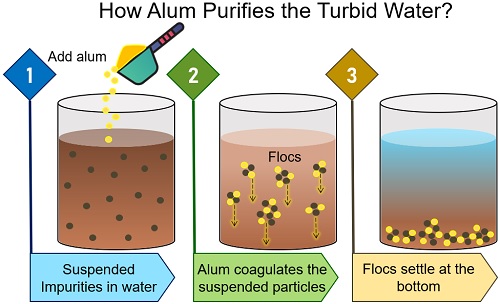 Alum plays a crucial role in both traditional and modern water purification methods due to its ability to effectively coagulate impurities and make water safe for drinking. In water treatment, alum, also known as aluminum sulfate, is added to untreated water to initiate a chemical reaction. When alum is dissolved in water, it dissociates into aluminum ions and sulfate ions. These aluminum ions act as a coagulant by neutralizing the negative charge on suspended particles and pathogens present in the water.
Alum plays a crucial role in both traditional and modern water purification methods due to its ability to effectively coagulate impurities and make water safe for drinking. In water treatment, alum, also known as aluminum sulfate, is added to untreated water to initiate a chemical reaction. When alum is dissolved in water, it dissociates into aluminum ions and sulfate ions. These aluminum ions act as a coagulant by neutralizing the negative charge on suspended particles and pathogens present in the water.
As alum is added to water, it forms tiny insoluble particles called flocs. These flocs attract and trap suspended particles such as dirt, clay, bacteria, and other impurities. As a result, these particles clump together and settle to the bottom of the water container through a process called flocculation. Once settled, the clear water can be carefully decanted or filtered to separate it from the settled particles, significantly improving its clarity and safety for drinking.
To use alum for water purification at home, start by dissolving alum powder in water at a concentration of about 1-2 grams per liter of water. Stir the solution thoroughly to ensure uniform distribution. Allow the alum to settle for at least an hour, during which time it will begin to coagulate impurities. After settling, carefully pour or siphon off the clarified water from the top, leaving the sediment and flocs behind. For added safety, filter the clarified water through a clean cloth or fine mesh sieve to remove any remaining particles before consumption.
It’s important to note that while alum effectively removes suspended particles and turbidity from water, it does not eliminate dissolved contaminants such as heavy metals or chemicals. Therefore, alum treatment should be followed by additional filtration or purification methods if the water source is known or suspected to contain such contaminants.
In traditional water treatment practices, alum has been used for centuries to purify drinking water in communities around the world. Its affordability, availability, and ease of use make it a practical choice for improving water quality, particularly in rural or developing regions where access to clean water is limited. By understanding and applying alum’s coagulation properties correctly, households can significantly enhance the safety and potability of their drinking water, ensuring better health outcomes for their families.
Gardening
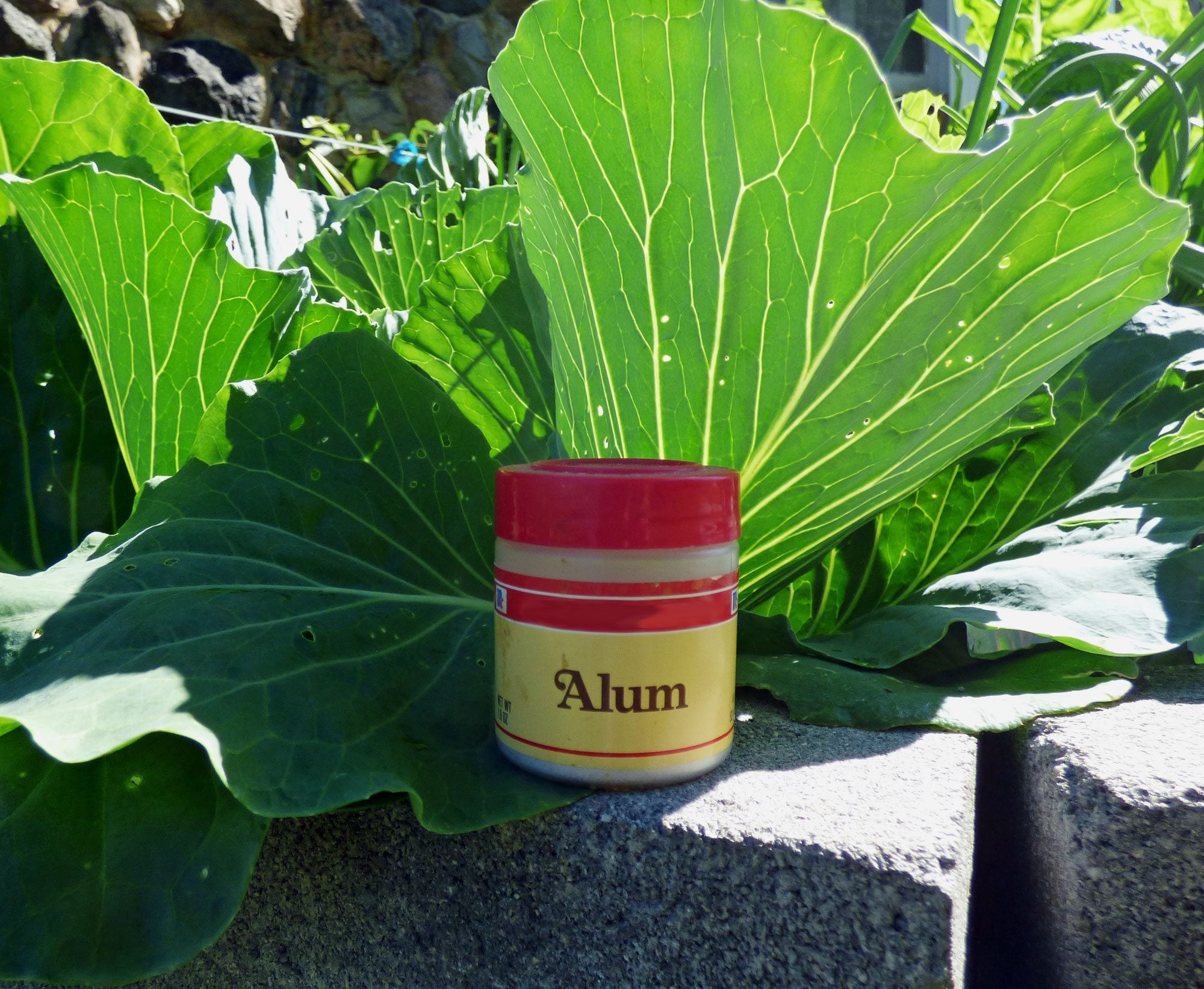 Alum can be a beneficial addition to home gardening practices, particularly for adjusting soil pH levels and promoting better plant growth. In gardening, soil pH influences nutrient availability to plants; some plants thrive in acidic soils, while others prefer alkaline conditions. Alum, also known as aluminum sulfate, is used to lower soil pH, making it more acidic and enhancing the availability of essential nutrients like phosphorus and trace elements.
Alum can be a beneficial addition to home gardening practices, particularly for adjusting soil pH levels and promoting better plant growth. In gardening, soil pH influences nutrient availability to plants; some plants thrive in acidic soils, while others prefer alkaline conditions. Alum, also known as aluminum sulfate, is used to lower soil pH, making it more acidic and enhancing the availability of essential nutrients like phosphorus and trace elements.
To use alum in gardening, start by testing the pH level of your soil using a soil testing kit available at garden centers or online. If your soil pH is higher than desired for the plants you intend to grow (typically for acid-loving plants like azaleas, rhododendrons, and blueberries), alum can be applied to lower the pH. The recommended application rate varies depending on the current pH level and soil type. Generally, about 1-2 tablespoons of alum powder per square meter of soil can be sprinkled evenly over the garden bed or mixed into the soil to a depth of 4-6 inches. Water the area thoroughly after application to help the alum dissolve and begin affecting the soil pH.
It’s important to monitor soil pH periodically, as excessive use of alum can lead to overly acidic conditions detrimental to plant growth. If you need to adjust pH further, additional applications of alum can be made in small increments over time, allowing the soil to adjust gradually. Incorporating organic matter like compost or well-rotted manure can also help buffer pH changes and improve soil structure.
For container gardening, alum can be mixed with potting soil before planting or added as a top dressing to adjust pH levels in pots and containers. Ensure thorough mixing and even distribution to achieve uniform pH adjustment throughout the container.
While alum is effective for lowering soil pH, it is essential to consider the specific requirements of plants in your garden and adjust application rates accordingly. Some plants, such as vegetables and herbs, prefer neutral to slightly acidic soils, so careful planning and monitoring are necessary to achieve optimal growing conditions.
Textile Care
 Alum, known for its versatility, plays a crucial role in textile care, particularly in fixing dyes, eliminating stains and odors, and maintaining fabric colors. In the realm of dyeing, alum acts as a mordant—a substance that helps bind dyes to fibers, thereby enhancing colorfastness and vibrancy. When using natural dyes derived from plants or minerals, pretreating fabrics with an alum solution ensures that the dyes adhere more effectively to the fibers, resulting in richer and longer-lasting colors. To fix dyes using alum in home dyeing projects, dissolve alum powder in hot water, submerge the fabric in the solution for about an hour, then rinse thoroughly before dyeing.
Alum, known for its versatility, plays a crucial role in textile care, particularly in fixing dyes, eliminating stains and odors, and maintaining fabric colors. In the realm of dyeing, alum acts as a mordant—a substance that helps bind dyes to fibers, thereby enhancing colorfastness and vibrancy. When using natural dyes derived from plants or minerals, pretreating fabrics with an alum solution ensures that the dyes adhere more effectively to the fibers, resulting in richer and longer-lasting colors. To fix dyes using alum in home dyeing projects, dissolve alum powder in hot water, submerge the fabric in the solution for about an hour, then rinse thoroughly before dyeing.
Alum also proves effective in removing stains and odors from fabrics. Its acidic properties enable it to break down protein-based stains such as sweat and blood. For stain removal, create a paste using alum powder and water, apply it directly to the stained area, and let it sit for a few hours before laundering as usual. This method helps lift stubborn stains and neutralize odors, leaving fabrics clean and refreshed. Additionally, adding a small amount of alum powder to the laundry cycle acts as a natural fabric brightener and helps maintain fabric colors over time. Alum’s ability to neutralize odors makes it an excellent choice for freshening up towels, linens, and other textiles, especially those prone to mustiness.
In laundry care, alum can also be used as a substitute for commercial fabric softeners. Add alum powder to the final rinse cycle to soften fabrics naturally without leaving behind chemical residues. This method is gentle on sensitive skin and ideal for maintaining the softness and comfort of clothes and linens. Furthermore, alum’s antimicrobial properties contribute to keeping fabrics clean and hygienic, particularly beneficial for households with members prone to allergies or skin sensitivities.
For preserving delicate fabrics or heirloom textiles, alum can be sprinkled lightly over items before storage to deter insects and prevent yellowing. Its ability to absorb moisture and inhibit bacterial growth helps prolong the lifespan of textiles while maintaining their original beauty and integrity.
Tips for Buying and Using Alum
Where to Buy Alum: Alum, also known as potassium alum or aluminum potassium sulfate, can typically be found in several forms at various locations:
- Grocery Stores and Supermarkets: Look for alum in the spice aisle or near baking supplies, where it may be available in powdered or crystal form.
- Provision Stores: Small shops stocking daily essentials often sell loose alum stone pieces, prices here are the most affordable
- Ritual Supply Stores: Hole in the wall stores selling temple offerings or other religious ritual supplies often stock alum.
- Online Retailers: Websites specializing in spices, natural remedies, or home goods often carry alum in different quantities and forms, making it convenient to purchase.
- Local Herb Shops or Apothecaries: Specialty stores focusing on herbs and natural products may stock alum for its medicinal and culinary uses.
 Tips for Proper Storage and Usage:
Tips for Proper Storage and Usage:
- Storage: Store alum in a cool, dry place away from direct sunlight. Ensure the container is tightly sealed to prevent moisture absorption, which can cause clumping.
- Handling: When using alum, ensure hands are dry to avoid clumping. Use a clean, dry utensil to measure out alum powder or crystals to maintain its quality.
- Dissolving Alum: For better solubility, dissolve alum in hot water before using it in solutions or applications. Stir well until fully dissolved to ensure even distribution and effectiveness.
- Avoid Overuse: Alum is potent, so use it sparingly and according to recommended guidelines to prevent adverse effects on skin or surfaces.
Safety Precautions to Consider:
- Skin Sensitivity: Some individuals may experience skin irritation or allergic reactions when exposed to alum. Conduct a patch test before widespread use, especially if you have sensitive skin.
- Avoid Ingestion: While alum is generally safe for external use, avoid ingesting alum as it can cause gastrointestinal irritation.
- Keep Out of Reach of Children: Store alum securely away from children to prevent accidental ingestion or misuse.
- Consult a Professional: If using alum for medicinal purposes or in larger quantities, consult with a healthcare provider or pharmacist to ensure proper dosage and application.
By following these tips for buying, storing, and using alum, you can safely incorporate this versatile mineral into your daily routines for cooking, skincare, cleaning, and more, enjoying its beneficial properties effectively and responsibly.
Conclusion
 Alum proves to be an indispensable ally for householders seeking natural, convenient, and effective solutions across various applications. From enhancing personal hygiene with its antibacterial properties to preserving food, purifying water, and even caring for textiles and gardens, alum offers versatility and reliability. Its availability in different forms and affordability make it accessible for everyday use, promoting sustainability and minimizing reliance on harsh chemicals. By incorporating alum into daily household practices, individuals can prioritize health, hygiene, and efficiency without compromising on effectiveness. Whether used for skincare, cleaning, gardening, or culinary purposes, alum continues to demonstrate its value as a trusted, time-tested solution. Embrace the benefits of alum and discover its numerous advantages in enhancing your daily routines and promoting a healthier home environment. Join us in supporting the MEDA Foundation to further empower communities through sustainable development initiatives.
Alum proves to be an indispensable ally for householders seeking natural, convenient, and effective solutions across various applications. From enhancing personal hygiene with its antibacterial properties to preserving food, purifying water, and even caring for textiles and gardens, alum offers versatility and reliability. Its availability in different forms and affordability make it accessible for everyday use, promoting sustainability and minimizing reliance on harsh chemicals. By incorporating alum into daily household practices, individuals can prioritize health, hygiene, and efficiency without compromising on effectiveness. Whether used for skincare, cleaning, gardening, or culinary purposes, alum continues to demonstrate its value as a trusted, time-tested solution. Embrace the benefits of alum and discover its numerous advantages in enhancing your daily routines and promoting a healthier home environment. Join us in supporting the MEDA Foundation to further empower communities through sustainable development initiatives.
Sources and References
To understand the various benefits, uses, and properties of Spatika Bhasma in Ayurveda, the following sources and references provide valuable information:
Books and Texts:
- “Charaka Samhita” by Charaka: An ancient Ayurvedic text that provides detailed information about various Ayurvedic medicines, including Bhasmas.
- “Sushruta Samhita” by Sushruta: Another classical text of Ayurveda that discusses the preparation and therapeutic uses of Ayurvedic formulations.
- “Bhava Prakash Nighantu” by Bhavamishra: A comprehensive Ayurvedic materia medica that includes detailed descriptions of different medicinal substances and their uses.
Research Articles:
- Sharma, P. V. (1992). “Dravyaguna Vijnana” (Materia Medica of Ayurveda). Chaukhambha Bharati Academy.
- Singh, N., & Sharma, P. (2001). “Rasayana: Ayurvedic Herbs for Longevity and Rejuvenation.” CRC Press. This book includes scientific explanations of Ayurvedic herbs and formulations.
Journals:
- “Ancient Science of Life” Journal: Features various research papers and articles on the applications and benefits of Ayurvedic medicines.
- “Journal of Ayurveda and Integrative Medicine” (JAIM): Provides peer-reviewed articles and studies on the integration of traditional and modern medicine.
Online Resources:
- National Center for Biotechnology Information (NCBI): Contains numerous research papers and articles on the medicinal properties of alum and its uses in Ayurveda.
- Ayurveda eBooks and Online Libraries: Various digital libraries provide access to classical Ayurvedic texts and modern research articles.
Ayurvedic Practitioners:
- Consultations with qualified Ayurvedic practitioners and experts who can provide insights based on traditional knowledge and clinical experience.
Educational Institutions:
- Ayurvedic colleges and universities that offer courses and research programs on Ayurveda and traditional medicine.
These sources provide a comprehensive understanding of Spatika Bhasma, its preparation, therapeutic properties, and applications in Ayurveda. They combine classical knowledge with modern research to offer a holistic view of this traditional Ayurvedic remedy.









